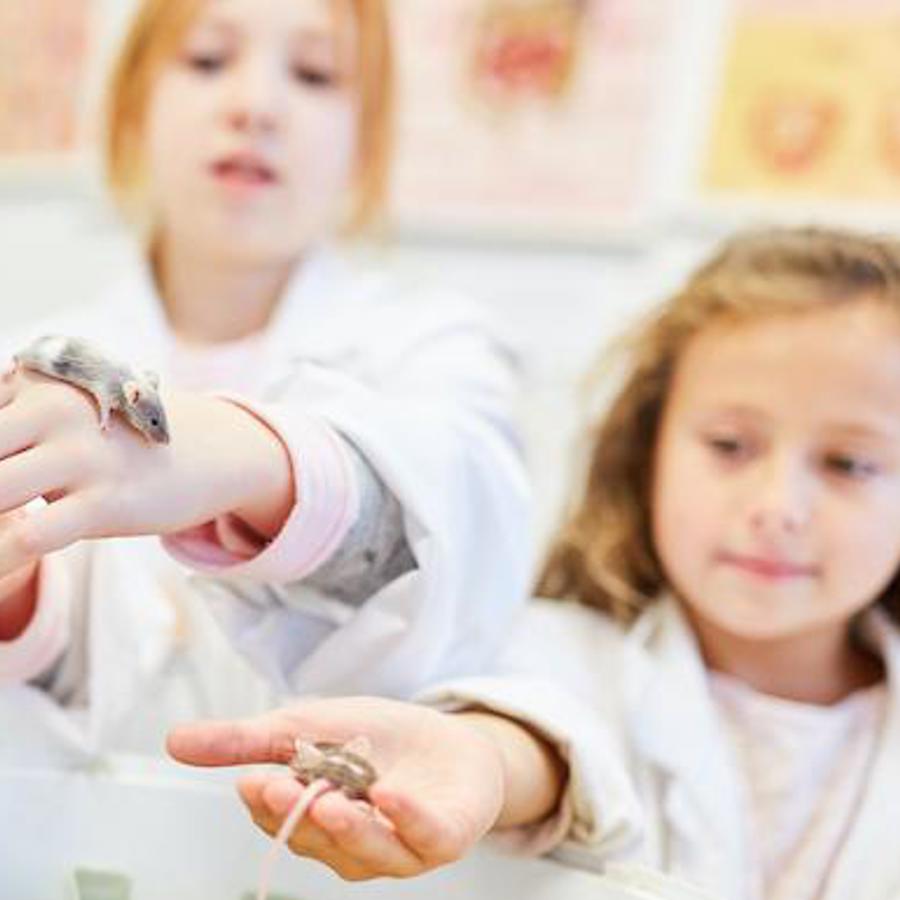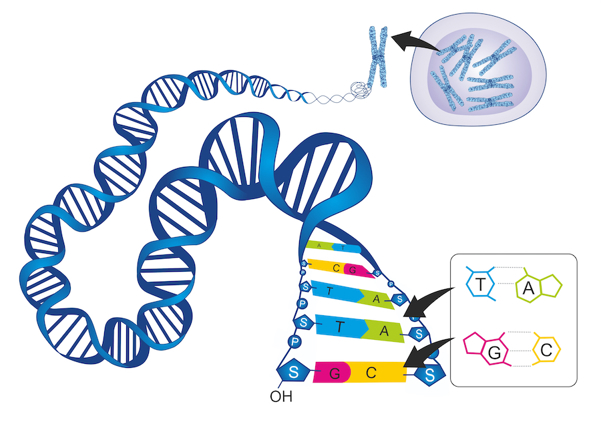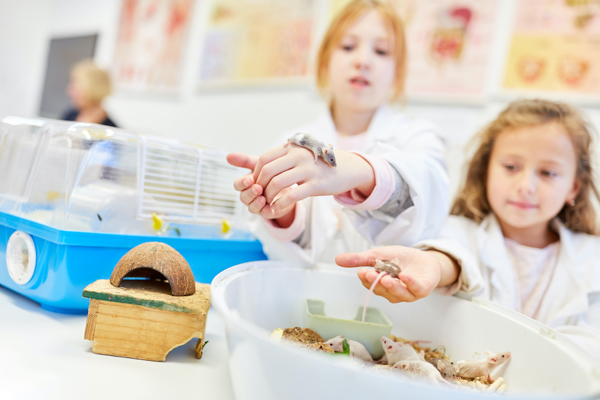
How are siblings 50% genetically identical while humans and mice are 85% identical?
March 17, 2006

- Related Topics:
- Relatedness,
- DNA basics,
- Common questions,
- Comparing species
A curious adult from Ohio asks:
"Help! I cannot seem to grasp why siblings are said to be 50% alike genetically when humans are said to be, say, 85% the same genetically as mice."
It's easy to see why this sort of thing is confusing -- it doesn't seem to make any sense! The reason why these two facts contradict each other is because they are not comparing apples to apples. The first thing we need to do is separate the apples from the oranges so that we are comparing the same “fruit,” so to speak.
When scientists say a mouse is 85% the same as we are, they mean that on a DNA level, we are that much alike. If we use the same measure on humans, siblings are actually closer to 99.95% alike. So why do we say that siblings are 50% related? That 50% refers to the amount of DNA we get from one parent and the amount we get from the other.
So we are much more similar to our relatives than we are to a mouse. Let's explore in a bit more detail what the 99.95% and the 50% numbers mean.
DNA basics
For those of you not familiar with DNA, DNA is the alphabet that makes up the instructions for making you. DNA is a long string of four types of molecules known as bases. Bases are a type of molecule or biochemical that can link together.
These four types of bases are referred to commonly as A, C, T, and G. Some of you may have seen the movie GATTACA. The title of the movie is a play on the bases that make up DNA.
How do a bunch of letters make instructions? The same way they do when we write out instructions. The string of letters forms a code that our cells can “read.”
A single instruction is called a gene. A gene can have a string of DNA as small as the 24 base-long gene found in the roundworm C. elegans, to a gene as large as the one in humans that is 104,000 bases long. A gene has the instructions for making a protein.
Here is an example of a gene: "GACTTAGAGGTTACCTTACATAAGAGCCCTTTGGGACCTT." Just a bunch of letters attached to each other in a specific order. Of course, each letter is actually one molecule attached to another molecule.
When scientists say we are 85% the same as a mouse, they are referring to the string of letters in a gene. This simply means that on average, if you compare a typical gene from mice to the equivalent gene in a human, 85% of their bases will be the same. Or if the gene was 1000 bases long, 150 bases would be different and 850 would be the same as the other. In other words we are 85% biochemically identical to a mouse.

DNA and relatedness
How biochemically identical are we to our fellow humans? The DNA sequence in your genes is on average 99.9% identical to ANY other human being. This means that if you have a gene that is 1000 bases long, on average there will be only 1 base that is different between you.
Now, this is to any human. How similar are you to your parents? Or to your brothers or sisters? This is where the 99.95% comes in.
You probably know that you receive half of your DNA or genes from each parent. So this means that you are 100% identical to each parent for each set of genes that you get from them.
But even though you are 100% identical to either set of genes from your parents, your parents are only 99.9% identical to each other. This means you must average the 100% with 99.9% which gives you 100 + 99.9%/2 = 99.95%.
So you are 99.95% biochemically identical to either of your parents, at least in terms of DNA sequences. It might take a while to wrap your mind around this unless you naturally like to play with numbers for fun.
You may be thinking, “that must mean that my brother or sister is also biochemically 99.95% identical to my parents.” So why aren’t siblings 100% genetically identical? Because you don't necessarily inherit the same 0.05% difference as your siblings.
And this gets us to the next part of your question. In that 0.05% difference between you and your sibling is the 50% relatedness people are talking about. Huh?

Sibling relatedness
The 50% refers collectively to how much "genetic material" you get from each parent. You get 50% of your genes from your mom and 50% of your genes from your dad.
You have two copies of each gene -- one copy from each parent. Here is the strange part -- the copy that you get from your mom may or not be the same copy that your sibling gets from your mom.
Remember that each of your parents has two copies of each of their genes too. When the egg or sperm that made you got made, only one copy of each gene was put in.
The copy that gets put in is chosen randomly through a process called meiosis. What this means is that you have a 50% chance of getting one of their two copies.
That probability doesn't seem impressive until you consider that you have around 25,000 genes. Throw in a 50% chance of getting one copy versus your sibling getting another copy and that makes meiosis a serious gene scrambler.
Because of this scrambling, you and your siblings share 50% of the same genes and are not 100% identical on the DNA level.
You and your siblings are closer to 99.95% identical on the DNA level. Of course, since we have 6 billion bases, a 0.05% difference still translates to 3 million different bases! Explaining how people can be so different and yet be 99.95% "identical" is another topic, and we are just starting to understand this phenomenon.

Author: Dr. Aaron Shafer
When this answer was published in 2006, Aaron was a postdoctoral fellow in the Department of Molecular and Cellular Physiology, studying activation mechanisms of g protein-coupled receptors in Brian Kobilka’s laboratory. Aaron wrote this answer while participating in the Stanford at The Tech program.
 Skip Navigation
Skip Navigation
